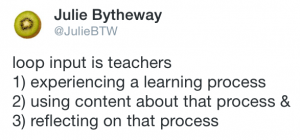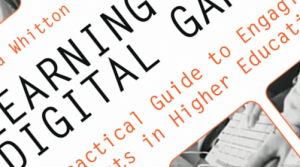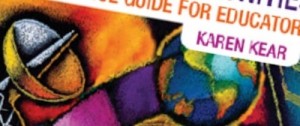Hoskins & Fredriksson (2008) learning to learn
Hoskins, B., & Fredriksson, U. (2008). Learning to learn: What is it and can it be measured? Luxembourg: European Commission Joint Research Centre. Retrieved from http://www.jrc.ec.europe.eu/
The transfer of knowledge and skills from teachers to learners is no longer effective education. We need to empower learners for an unknown future in a rapidly changing technological and global world. Education needs to empower learners to learn to learn.
Learning to learn is not a skill, but a complex competency. Not content nor context based, but transdisciplinary. Competencies are broad and complex, combine knowledge, skills, attitudes and values, and require high levels of cognition (Tiana, 2004). Competencies are measured in real world tasks not general theoretical abilities. Learning to learn is a key European competency necessary and beneficial to individuals and society (Eurydice, 2002).
Defining and measuring learning to learn is difficult. An interdisciplinary theoretical approach is required. Stringher (2006) collected over 40 definitions which spanned metacognition, socioconstructivism, sociocognitive and sociohistorical approaches, lifelong learning, assessment studies, learning strategies, and cognitive psychology and social cultural paradigms. Cognitive psychology examines collecting, processing, constructing, storing and retrieving of knowledge. Whereas, social cultural paradigms examine social contexts and interactions.
Learning to learn includes managing time and information, learning individually and collaboratively, being aware of needs and processes, pursuing and preserving, using guidance, building on prior learning and life experiences, applying knowledge and skills in different contexts, being motivation and having confidence (Educational Council, 2000).
Learning to learn is not intelligence: a fixed mental capability to reason, plan, solve problems, think abstractly, comprehend complex ideas, learn quickly and learn from experience (Gottfredson, 1997). Learning to learn is not problem solving: use of cognitive processes to confront and resolve realistic cross-disciplinary situations with unclear solutions and disciplinary areas (PISA, 2003). The European assessment framework includes cognitive domain (identifying proposition, testing rules, using mental tools), affective domain (motivation, strategies, self-esteem, perceived support), and metacognition (problem solving, accuracy).
The University of Helsinki defines learning to learn as ability and willingness to adapt to novel tasks, and self-regulation of cognitive and affective perspectives (Hautamäki, 2002). The Helsinki assessment framework includes context-related beliefs (societal frames and perceived support), self-related beliefs (motivation, action-control, identity, assignment acceptance, self-evaluation, future orientation), and learning competencies (learning and reasoning domain, self management and affective regulation).
The University of Bristol defines Learning Power as a complex mix of dispositions, lived experiences, social relations, values, attitudes, beliefs that shape engagement (Deakin, Crick, Broadfoot, Claxton, 2006). The Bristol assessment framework includes growth orientation, critical curiosity, meaning-making, dependency and fragility, creativity, relationship/interdependence, and strategic awareness.







